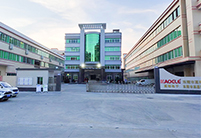At this stage, the use of switching power supply terminals in electronic products has already become a development trend, and the switching power supply terminal components themselves are slowly expanding, and can bear greater output power. With the increase in the volume of terminal blocks, their necessity in the role of machinery and equipment has become more and more prominent, and they have also played an increasingly critical role in ensuring product characteristics. The following actually introduces the key elements that affect the selection of terminal blocks.
First, the output power solution elements
One of the first factors that must be considered is that the output power of the components is not uniform when specifying the output power and characteristic specifications of the terminal block products. The specifications and models of terminal block products manufactured in Europe use IEC standards, while those made in the United States use UL standards.
The difference between the two norms is very large. Technical engineers who do not understand the product model determination method will take a very large risk, because the components used may not reach the necessary output power level, or the specifications and models of the components used far exceed the design scheme. must. In Europe, the current rating of a component is determined based on the temperature of the electrical conductor of the metal material when the detected current is increased. When the temperature of the metal material pin is higher than the working temperature by 45°C, the accurate measurement staff will take the current amount at this time as the rated voltage value (or larger current) of the component. Another item of the IEC specification model is the allowable current, which is 80% of the maximum current. In contrast to this, the UL specification will make the electrical conductor temperature of metal materials higher than 90% of the current when the operating temperature is higher than 30 ℃ as the current tolerance value of the components. It is not difficult to see that the temperature of a part of the electrical conductor of metal materials is a very critical factor in all applications. This is critical for machinery. Because mechanical equipment generally must be in a working environment where the temperature reaches 80 °C. If the temperature of the terminal is 30°C or 45°C higher than this temperature, the temperature of the terminal may exceed 100°C. Depending on the type of tolerance value and insulation material used for the selected components, products must be operated at a current less than the rated current, so as to ensure that they can work reliably within the expected temperature range. Sometimes, materials suitable for compact packaged components will not take into account the heat dissipation requirements very well, so the current flow of such terminal block components must be significantly less than the rated current.
Another factor that is often overlooked when selecting components is the termination technology applied to the product. Most of the switching power supply terminal products are still using the buried hole interface method. This type of method can provide the necessary mechanical equipment to be suitable, and can ensure that the contact with the power layer embedded in the double-layer circuit board maintains a reliable electrical equipment. There are various types of pins used to connect terminals to circuit boards. Some companies only provide single-pin model specifications, while others provide multi-pin products. The advantages of multi-pin products depend on: it can make the current flow more evenly distributed to the circuit board wiring, provide more reliable mechanical equipment reliability and improve the robustness of electric welding.
2. Appearance elements
Although the name "switching power supply terminal" does not sound good-looking, many companies feel that it has a key effect on the appearance of the product and the appeal to customers. Switching power supply terminals must be easily installed on the spot, because they are often installed in front-end development of easy-to-see commodity control panels. In that way, salespeople often expect to have a certain say in the appearance of switching power supply terminal products. However, this situation often occurs: the products designed by technical engineers meet the main parameters of all mechanical equipment and electrical equipment, but have to be changed because they do not meet market sales regulations. If this happens at the end of the design cycle time (often when the marketing and promotion unit sees the prototype for the first time), then a violent dispute is inevitable, which will lead to increased costs and delays in delivery time. In many industrial production automatic control systems, terminal blocks are often one of the rare components that professional and technical personnel must pay special attention to. Although its operating interface is very simple (mainly screws), it is crucial for everything to function properly on the machine.


